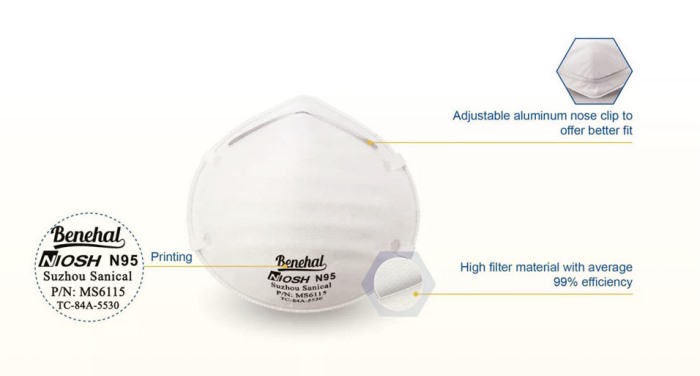As health officials rush to minimize the spread of the highly contagious variant of Omicron, many experts are advising people to switch from cloth or surgical masks to more protective N95 and KN95 masks. Meanwhile, some health experts are urging people, even those who have been vaccinated, to wear more protective masks than cloth masks, including respirators such as N95 or KN95, surgical masks, or double surgical masks under cloth masks. Illness The Centers for Prevention and Control recommends that people wear the most appropriate protective face covering, and you will wear it at all times.
Johns Hopkins Medicine does not recommend the use of clear thyroid masks, which, unlike goggles, still have gaps around the face and therefore do not provide the same protection as wearing a face shield. At Johns Hopkins, medical teams wear face coverings over N95 masks or respirators for extra protection when treating patients. N95 or Professional Grade Medical Masks N95 respirators and other professional grade medical masks are sized to provide an airtight seal between the outside air and your face.

Similar to the N95 respirator, the KN95 face mask is another type of respirator used as personal protective equipment (PPE). N95 respirators and surgical masks are examples of personal protective equipment used to protect the wearer from face-contaminating particles or liquids. Like N95 respirators, procedural and surgical masks are used by healthcare professionals whose safety depends on an adequate supply. N95 breathing masks may use filter material similar to surgical masks, but usually with more layers and a tighter fit.
Commonly worn by healthcare workers and first responders, N95 respirators can filter out up to 95 percent of airborne droplets and particles, according to the CDC. When worn properly (with an N95 mask that fits snugly against the wearer’s face), it can protect against hazardous airborne particles. With the ability of the KN95 face mask to create an airtight seal, this mask is ideal for the face to provide 95% protection against small particles. This multilayer mask is the regulatory standard for certified filter respirators in China.
While the use of reusable cloth masks was not recommended until recently, the Centers for Disease Control and Prevention (CDC) and other experts acknowledge that given Omicron’s transmission of variants of SARS-CoV-2. Have. Face shields may or may not meet any level of fluid barrier or filtration efficiency; therefore, they are not intended to replace N95 respirators or other face-piece respirators (FFR) that provide respiratory protection for the wearer, or surgical Face mask. Persons using these different types of respirators must carefully shave facial hair along the sealing surface of the mask when required due to workplace hazards, and must not wear makeup (both of which may prevent the mask from sealing properly). All of these respirators represent a big step forward in protecting against traditional cloth masks, but they’re not the same.

For more information about N95 or KN95 masks, welcome to visit n95instock (https://surgicaln95mask.com/)


Thank you henry for sharing knowledge with us. I made learning interesting. Love from 🇮🇳